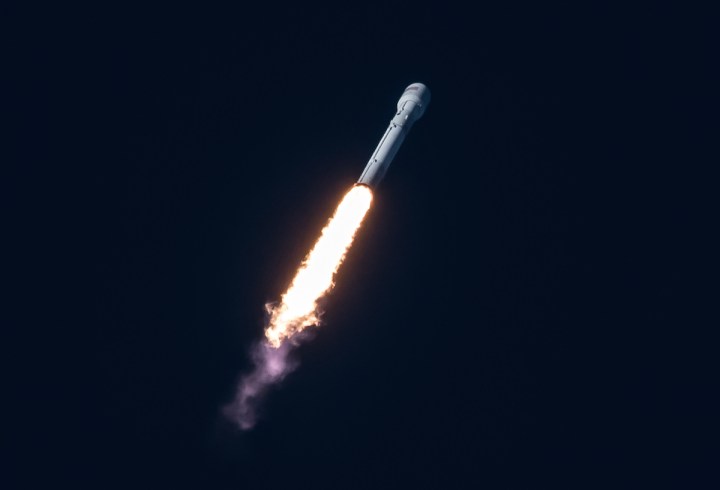
The mission to send the Intelsat 35e communications satellite into orbit went without a hitch this time around, lifting off from the Kennedy Space Center in Florida on Wednesday at 7.38 p.m. ET. The satellite deployed just over half an hour after launch, SpaceX said.
It’s SpaceX’s 10th launch this year and its third in under two weeks. Elon Musk’s private space company has made it clear that it’s keen to ramp up its launch frequency with its reusable rocket system, eventually to as many as one a day if the demand is there.
In contrast to SpaceX’s previous Falcon 9 missions, this one didn’t include bringing the rocket back to terra firma. Considering the large weight of the satellite and the high orbit to which it was heading, the Falcon 9 didn’t have enough fuel left to attempt one of its spectacular landings. Of course, as this is a reusable rocket system that SpaceX is developing, the team hopes that one day even these more fuel-hungry missions can conclude with perfect landings.
The launch attempts on Sunday and Monday were aborted with just seconds to go due to computer glitches. The failures marked a setback for SpaceX, which had been enjoying a decent run of launches since returning to flight in January following a rocket explosion in September 2016.
But it’s easy to forget just how far SpaceX has come — and how much it’s achieved — with its ambition to build a reliable and efficient reusable rocket system to significantly reduce the cost of space travel. The feat of launching an unmanned rocket into space and bringing part of it back to a specific landing spot would’ve sounded absurd just a short while ago. But SpaceX, which was founded in 2002, has pretty much nailed the procedure.
And SpaceX CEO has far bolder ambitions. Musk wants ultimately to put humans on Mars, even to build a city there. In the meantime, his team will continue deploying satellites for an array of private firms, and launching supply missions for the International Space Station.
And as if all that wasn’t enough to be getting on with, in 2018 the company is aiming to send two space tourists on a trip around the moon.
Editors' Recommendations
- Watch SpaceX fire Starship’s Raptor engines ahead of 4th test flight
- SpaceX Starlink internet heads to first cruise ships
- Watch SpaceX’s Crew Dragon thrusters guide it to space station
- How to watch SpaceX Crew-4 astronauts launch to ISS
- Check out this cool NASA image of SpaceX Crew-3’s ride home


